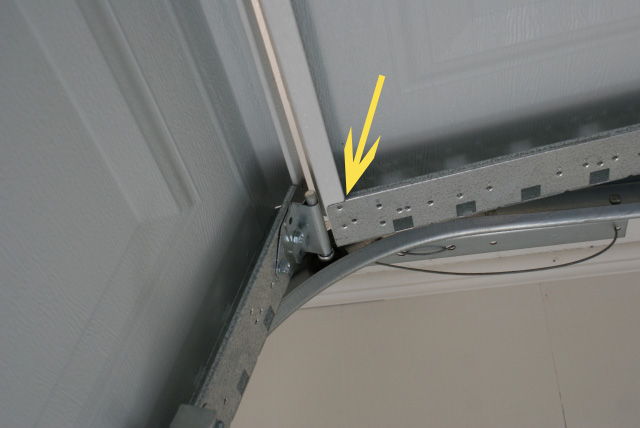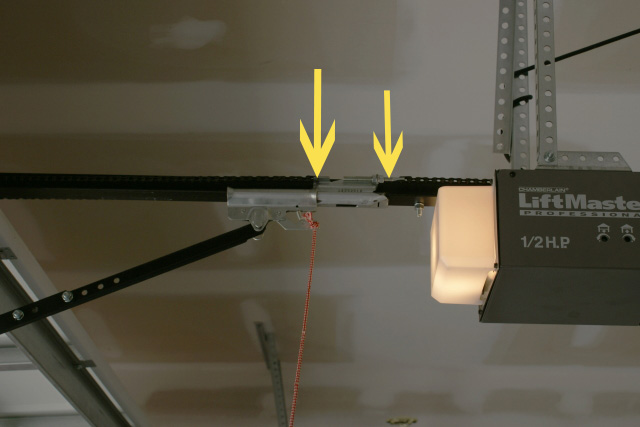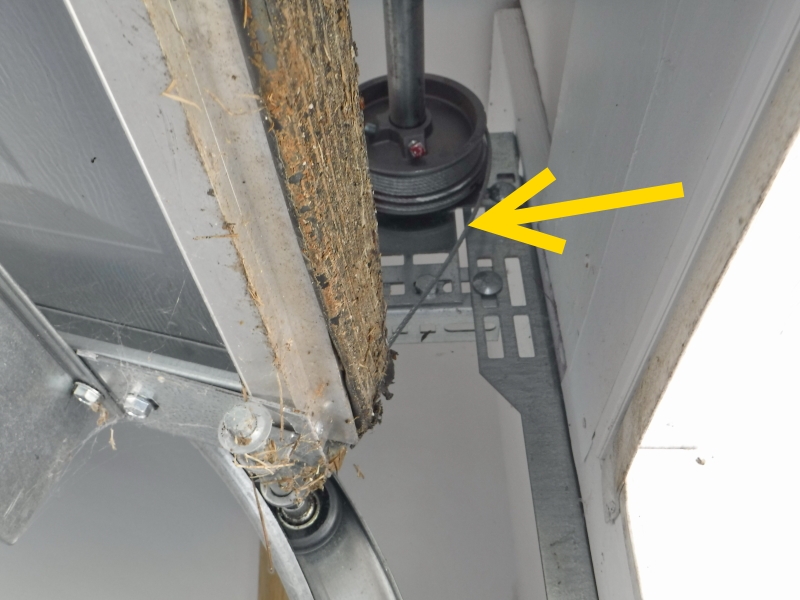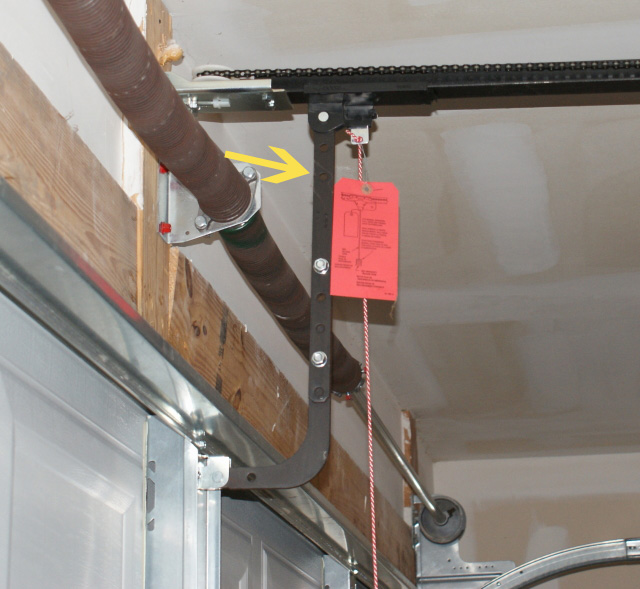A good home inspector will carefully examine your garage door. He’ll check for damage, proper operation and safety. You’d be amazed at how many homes that I have been to have garage doors which are improperly adjusted or even dangerous. Most people don’t realize how dangerous they can be. Every year people die because a heavy garage door falls on them. A garage door can be quite heavy and is held up by springs. If these springs break or are not adjusted right it could make opening the door quite difficult. A properly adjusted door should be easy to pick up and it should stay up on its on if you pick it up to a height of about three foot. If it doesn’t pass this test have it adjusted professionally. This is because some doors have external springs which are quite dangerous for the do it yourself handyman to adjust. It’s dangerous for the installer too except he has more experience. Sometime people will attempt to “fix” a heavy door by installing an opener. This is a mistake….. adjust the door first and then install the opener to keep from burning the motor up on your opener. Also an improperly adjusted opener can damage your door so make sure you have a professional install it.
Your inspector should:
- Observe any significant damage. (bent panels, dings, loose bolts etc.)
- Make sure door and opener are mounted securely.
- Observe the cables and springs and report any safety concerns. Broken springs or disconnected cables are not uncommon.
- Operate the door manually first. Never try to operate it with the opener until you can confirm the door is not locked and that it is properly tensioned. Door should be easy to lift with no binding, rubbing or uneven pulling.
- Door should stay up on its own. It should stay up on its own at full height and when lifted to about 3’6″ off the ground.
- Operate the opener only if the door is installed properly.
- Inspect to see if the safety “eyes” are about 6″ off the ground.
- Check to see if the safety reversal is working (safety eye beams).
- Check if travel limits are correct.
- Check to see if the manual release cord is present.
- If the inspector decides to inspect the force reversal system caution is advised. This is how much force the motor will exert before it reverses itself. The force adjustment should be set to allow enough force to open and close the door depending on how heavy the door is but still back it up if it encounters an obstacle.
- The opener control button should be 5′ or more above the floor in direct sight of the door.
- Metal doors with an opener should have a metal U Bar across the top to prevent the door from bending where the opener is attached to it.
Now Let’s check out some common deficiencies in the photos and commentaries that follow.

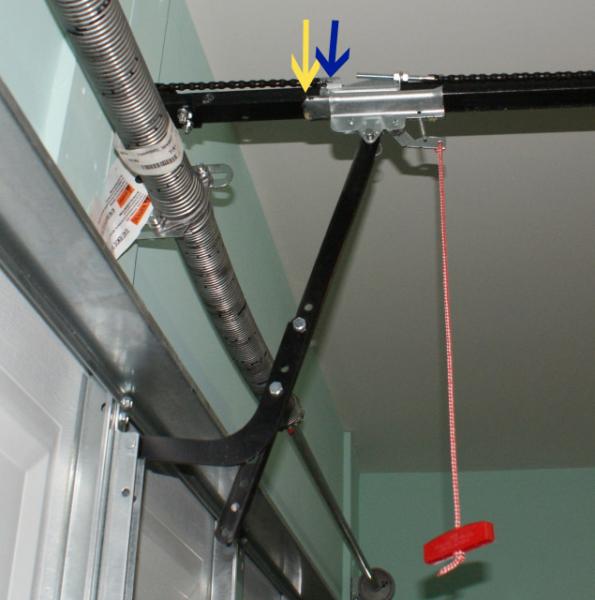
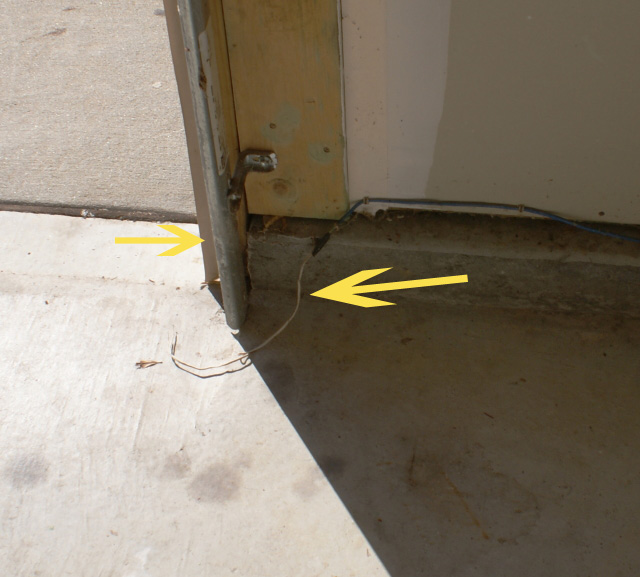
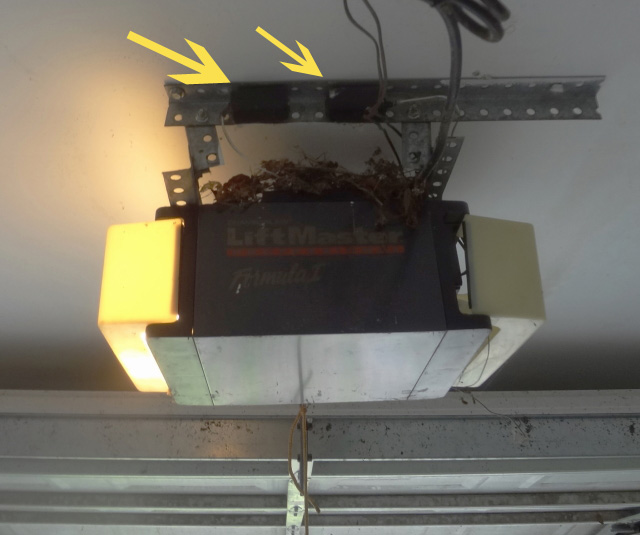
In conclusion I think you can see that there is a lot to inspect on a garage door. We haven’t mentioned mounting, rot at the jambs, or occasionally the header is rotted from a leak above. Often the top panel is bent from a missing U bar or mal adjusted door.


